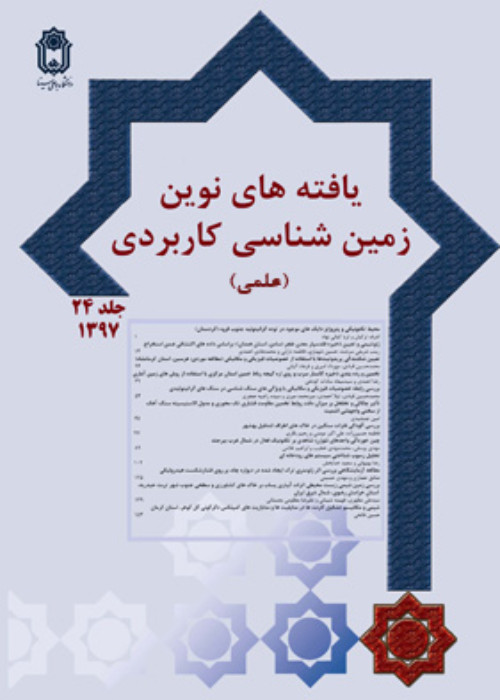Sedimentological analysis of fluvial systems
Author(s):
Article Type:
Research/Original Article (ترویجی)
Abstract:
In this research, in addition to some of the researching views of rivers are discussed, achievments and sedimentological views of the Iranian rivers are studied in more detail. One of the most important environmental problems, is pollution of sediments or river water. Concentration of pollutant metals in fluvial sediments depends on various indicators such as the physico-chemical properties of the fluvial environment and geochemical charactristics of the metals. Methods for determination of total content and sequential extraction of different species of metals are used to determine the pollution of metals. In GIS-based researchs, river changes maps (in specific time periods) and flood zoning are widely used in flood plan management. In the river engineering debate, some common methods for investigating the flood phenomenon, including digital altitudinal model, hydrological trend model and triangular irregular net, are used. Also, other related topics in this regard, include the threshold of grain movement and predicting the behavior of rivers (based on artificial neural networks models and models based on statistical methods such as linear and nonlinear regression, Pearson, Spesarman and Man-Kendall correlation methods). Investigation of the threshold of grains movement will be done by methods such as flow unit discharge, critical shear stress and critical mean flow velocity. The most important subject in fluvial sedimentology include river morphology, flow regime and bedforms, classification of fluvial channel bodies and valley fills, fluvial styles, sedimentary scales in fluvial sediments, sedimentary facies, architectural elements, sediment load and fining trend of river sediments. Fluvial architecture consists of geometry and internal arrangement of channel and overbank deposits in fluvial sequences. The analysis of architectural elements is a relatively new method for the interpretation of fluvial facies. The variation of channel types and sediments in fluvial environments are due to the wide range of dependent factors governing on the fluvial sedimentation. Classifications of lithofacies, bounding surfaces and architectural elements are one of the most important methods for analyzing of fluvial architectural elements.
Keywords:
Language:
Persian
Published:
Journal of New Findings in Applied Geology, Volume:12 Issue: 24, 2018
Pages:
102 to 124
magiran.com/p1897496
دانلود و مطالعه متن این مقاله با یکی از روشهای زیر امکان پذیر است:
اشتراک شخصی
با عضویت و پرداخت آنلاین حق اشتراک یکساله به مبلغ 1,390,000ريال میتوانید 70 عنوان مطلب دانلود کنید!
اشتراک سازمانی
به کتابخانه دانشگاه یا محل کار خود پیشنهاد کنید تا اشتراک سازمانی این پایگاه را برای دسترسی نامحدود همه کاربران به متن مطالب تهیه نمایند!
توجه!
- حق عضویت دریافتی صرف حمایت از نشریات عضو و نگهداری، تکمیل و توسعه مگیران میشود.
- پرداخت حق اشتراک و دانلود مقالات اجازه بازنشر آن در سایر رسانههای چاپی و دیجیتال را به کاربر نمیدهد.
دسترسی سراسری کاربران دانشگاه پیام نور!
اعضای هیئت علمی و دانشجویان دانشگاه پیام نور در سراسر کشور، در صورت ثبت نام با ایمیل دانشگاهی، تا پایان فروردین ماه 1403 به مقالات سایت دسترسی خواهند داشت!
In order to view content subscription is required
Personal subscription
Subscribe magiran.com for 70 € euros via PayPal and download 70 articles during a year.
Organization subscription
Please contact us to subscribe your university or library for unlimited access!



